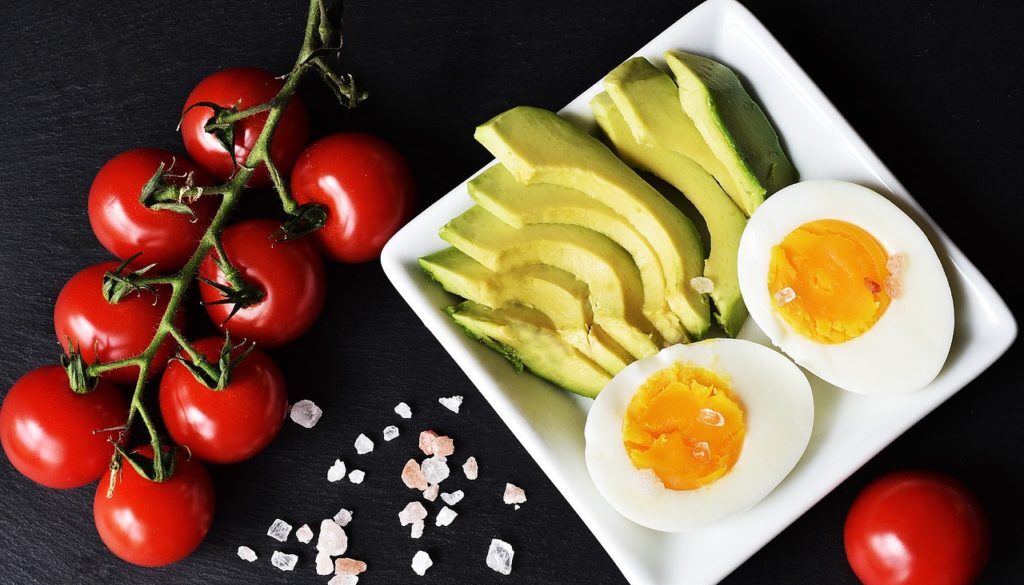KETO DIET: What is it and is it right for me?
By Aparna Mele, MD

Anyone interested in weight loss has heard of the KETOGENIC diet, colloquially called the “keto diet”—a low carb, moderate protein, and high fat diet that purposefully puts the body into a metabolic state called ketosis. In ketosis, the liver produces ketones, which become the main energy source for the body. By drastically reducing carbohydrate intake and therefore lowering blood sugar and insulin levels, the body shifts its metabolism away from carbs and towards ketones and fats, thereby reducing fat stores. The premise is that the body runs more efficiently as a fat burner instead of a sugar burner and the keto diet trains the body to stop depending on glucose for energy and forces it to look for alternative sources, ie fat stores, which helps drive weight loss.
While this diet can be effective, it should be remembered that it is very restrictive and requires enormous discipline, making it less sustaining as a long-term diet. It may not be a great fit for those who cannot regularly cook and need to eat on the run. Even the slightest deviation from the diet will knock you out of ketosis, limiting weight loss and taking you back to the beginning, so there is little room for error. You simply cannot eat whatever you want, although proponents of the diet state that once in prolonged ketosis, the cravings for the foods (ie carbs) that you cannot eat often disappear.
That said, there is a bounty of information available to guide a person through the diet. Meal planning is key and will require a well-organized preparation process, plus mental discipline and a heartfelt commitment to staying consistent. To succeed, you will need to calculate daily macro goals so your total intake of carbs does not exceed 20g a day. You also need plenty of hydration and sleep on this diet, as it can cause shifts in water and mineral balance in the body. On the diet, there is an initial adaptive process that the body must undergo, that some people refer to as the “keto flu”: lethargy, brain fog, hunger, indigestion, poor sleep. Doing a short trial run for a week or two can minimize the keto flu and regulating sodium, potassium, and magnesium levels is helpful too. This diet is particularly unsafe for patients with kidney disease who already live on a restricted renal diet and is not useful for those looking to add large amounts of muscle mass, but it can be highly effective for diabetics and overweight/obese individuals with metabolic syndrome.
The Keto diet may be best utilized as a periodic diet for most people, as fully eliminating carbohydrates is a radical move. After several months of restrictive eating, this diet plan does allow you add modest carbs back as people move into a low glycemic diet, which is more liberal and focuses on reducing processed carbs while adding back slowly digested carbs. The ratio of intake in this low glycemic diet is 40% carbs, 40% fats, and 20% protein and this can be continued long term as maintenance after you effectively lose the weight you desire. What you don’t want to do is stop the diet and go back to old patterns of eating and behavior. This diet should be a springboard towards healthier lifestyle and nutritional patterns.
Avoid These on the Keto Diet
- Grains:
- Sugars like honey, syrup, agave
- Most Fruits
- Starchy vegetables like potatoes, yams
- Legumes
- Low cal diet products, sugar-free diet foods
- Alcohol
- Processed food
Enjoy These on the Keto Diet
- Meats
- Leafy greens
- Fish
- High fat dairy
- Above ground vegetables
- Nuts and seeds
- Selective low glycemic fruits like berries, avocados
- Low carb sweeteners like Stevia
- Other fats like coconut oil, olive oil, avocado oil
- Non-processed, whole, single ingredient foods



